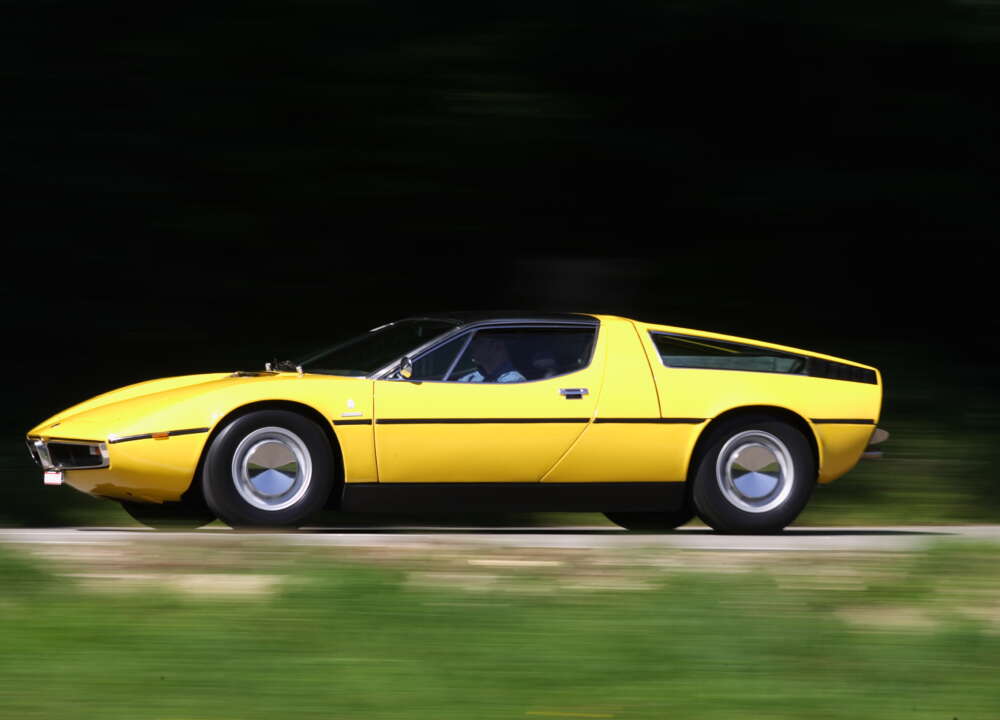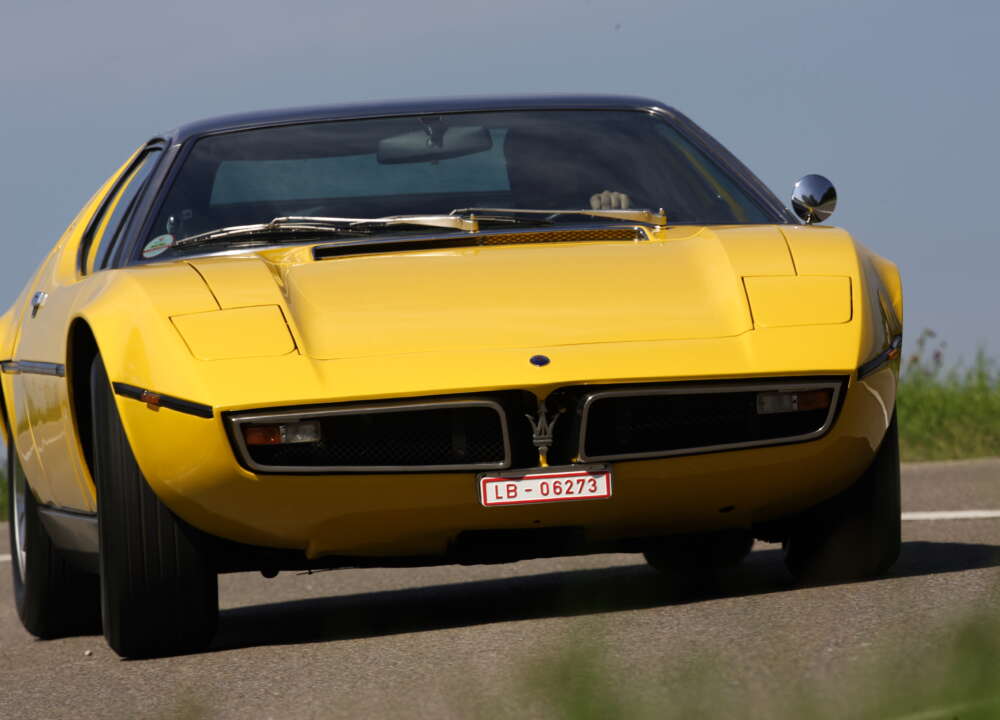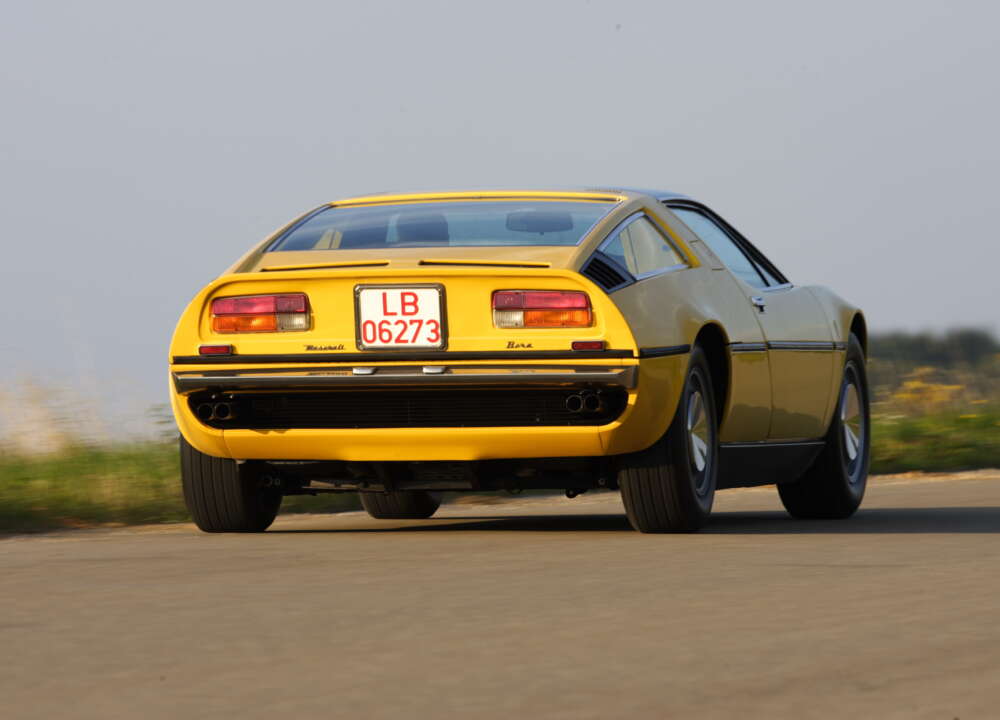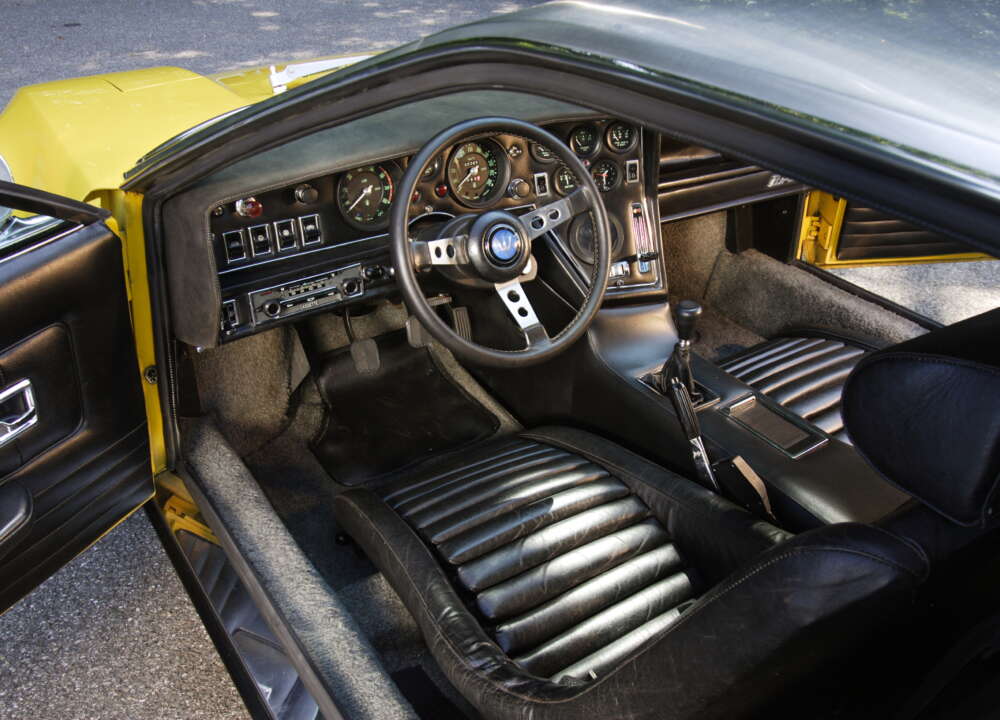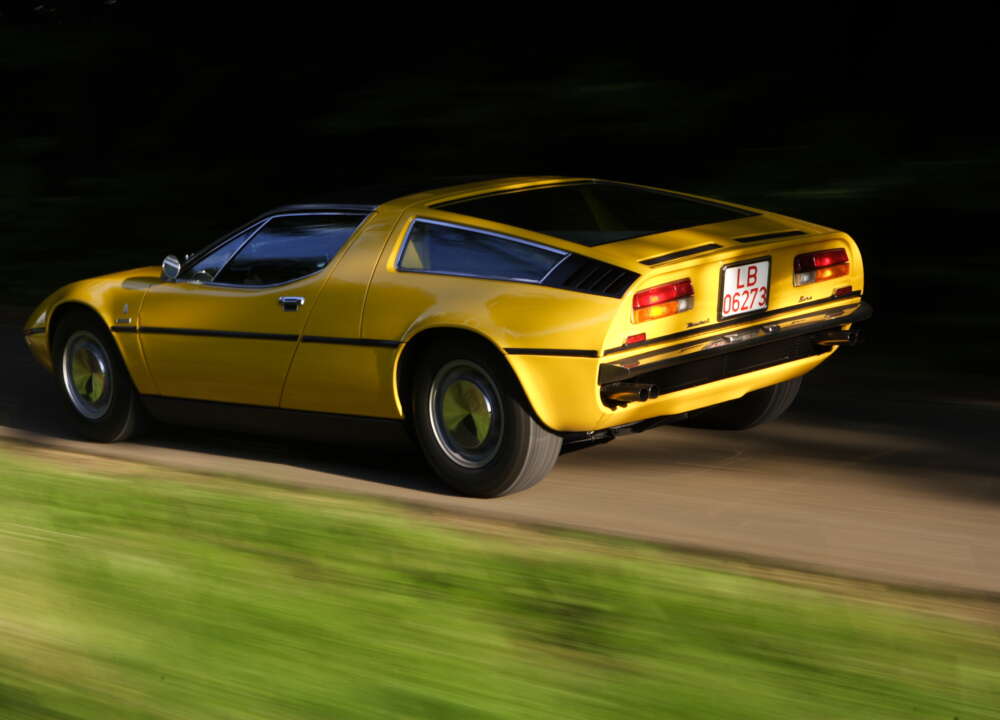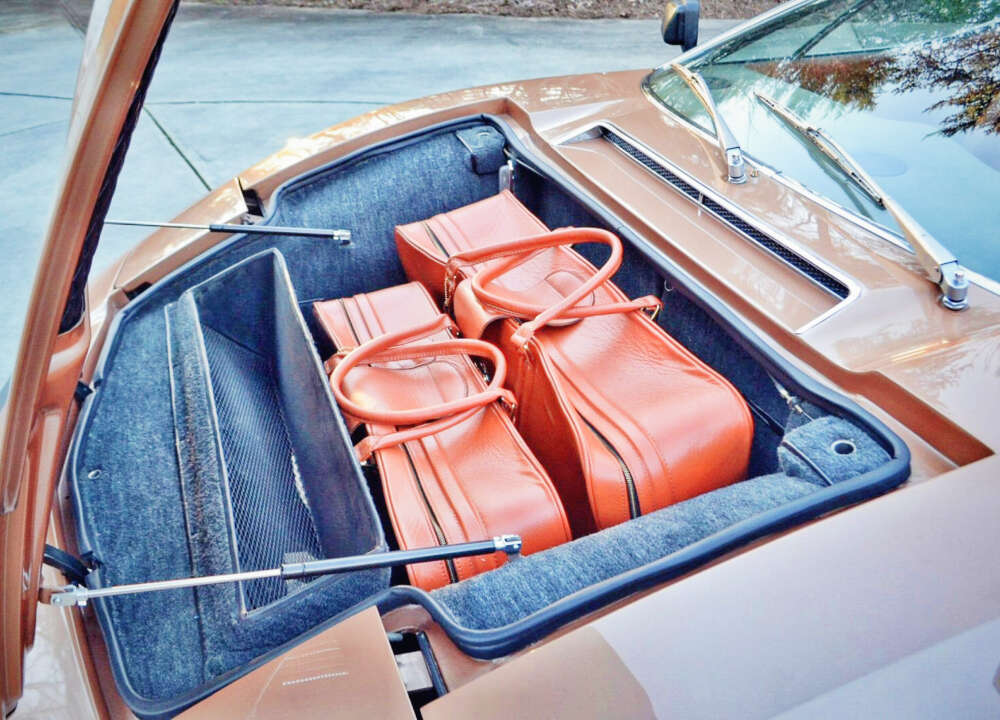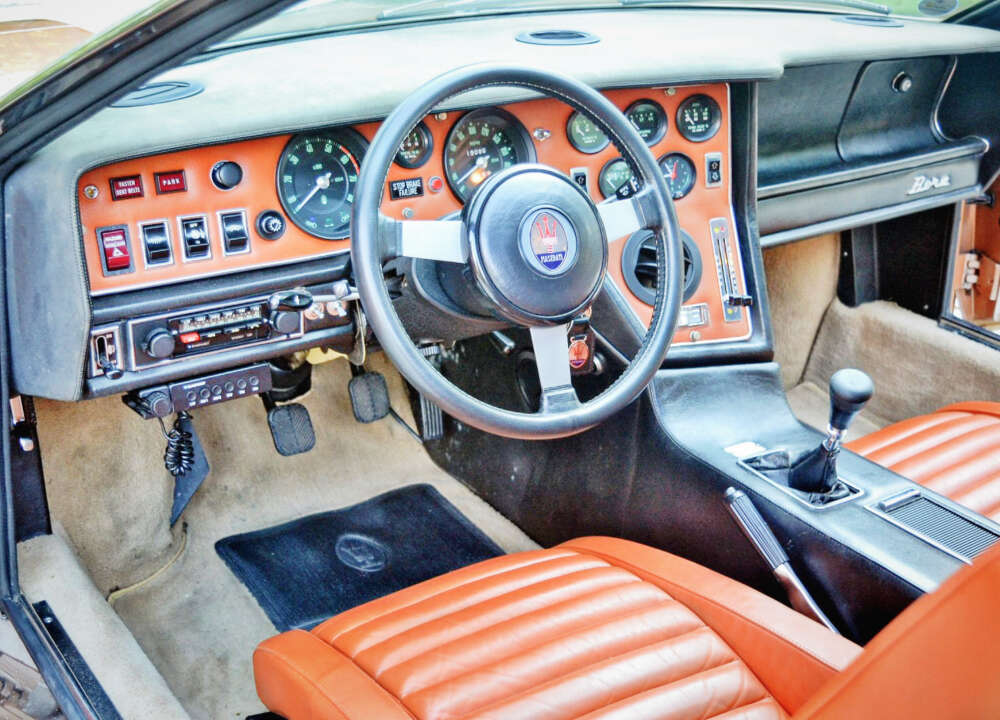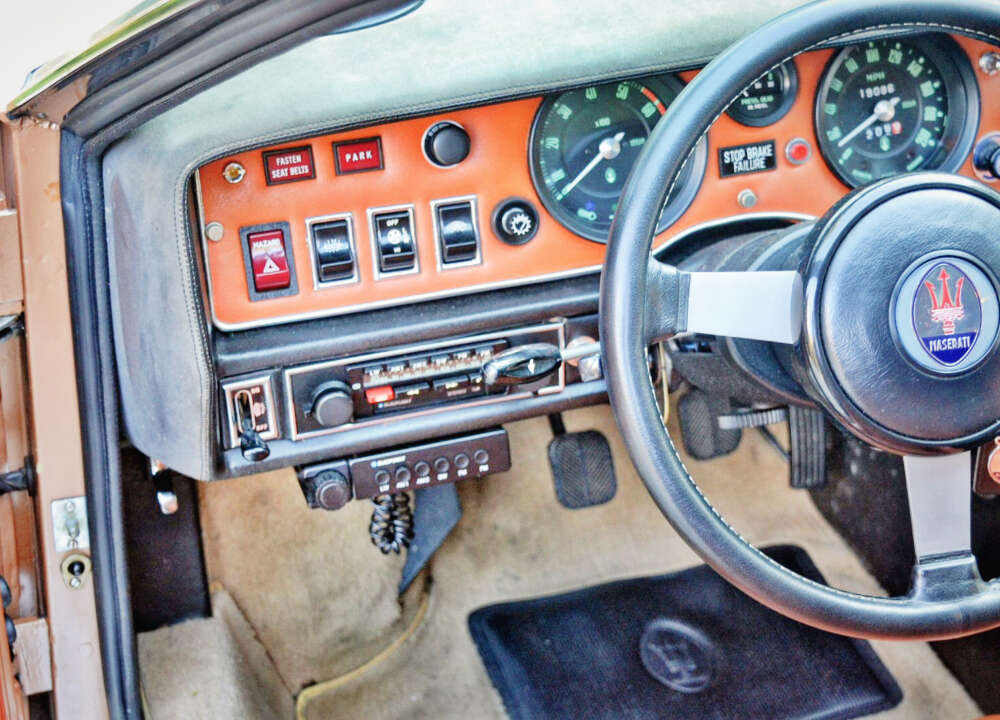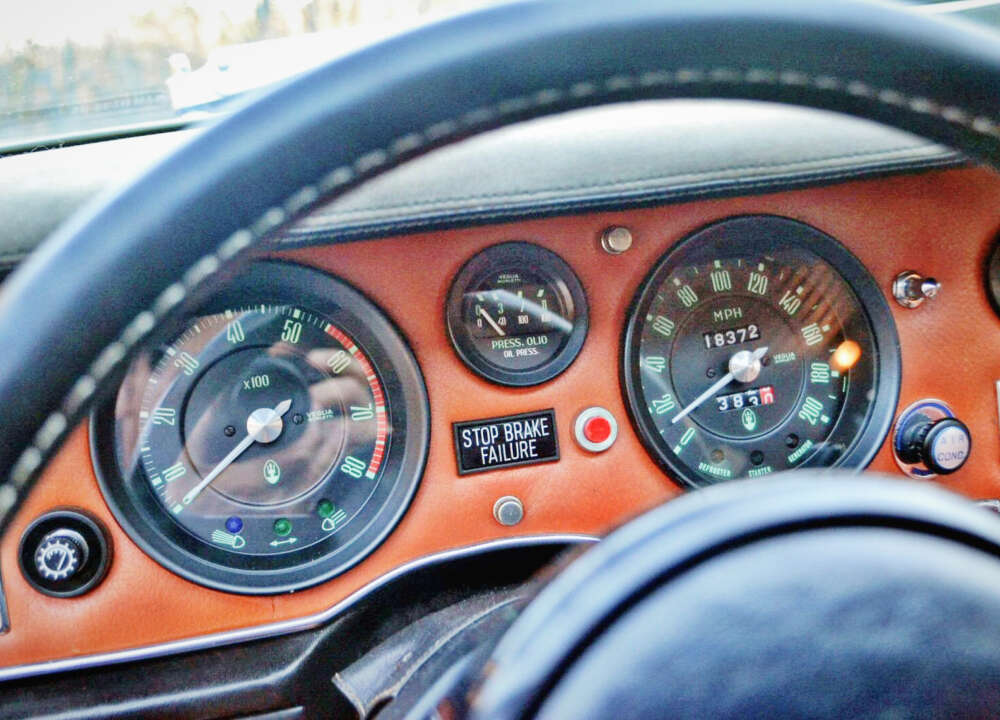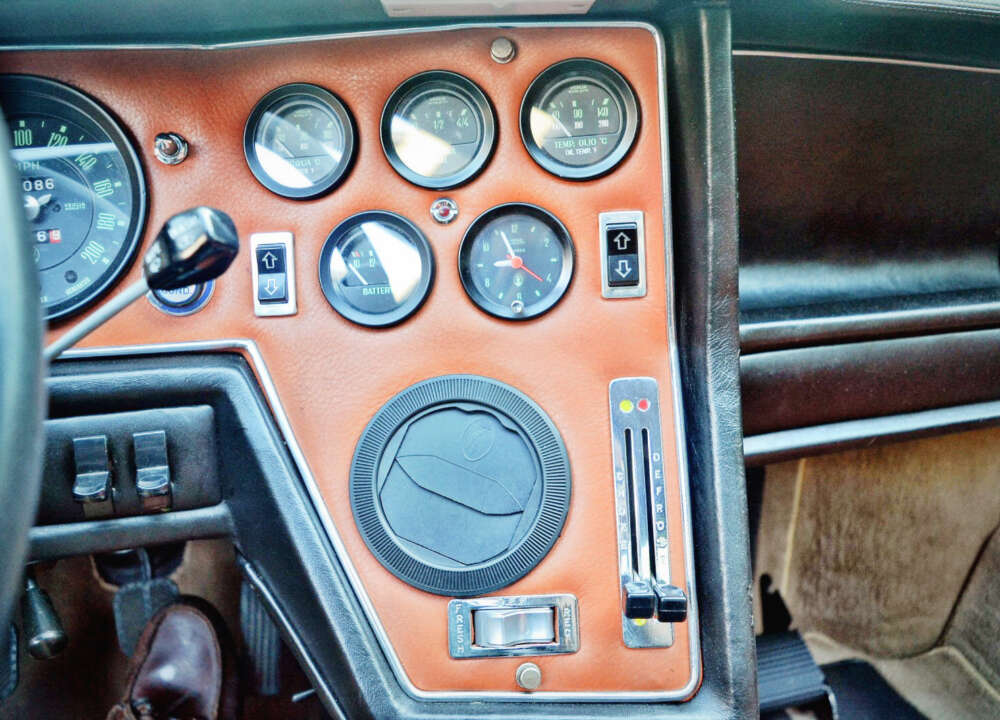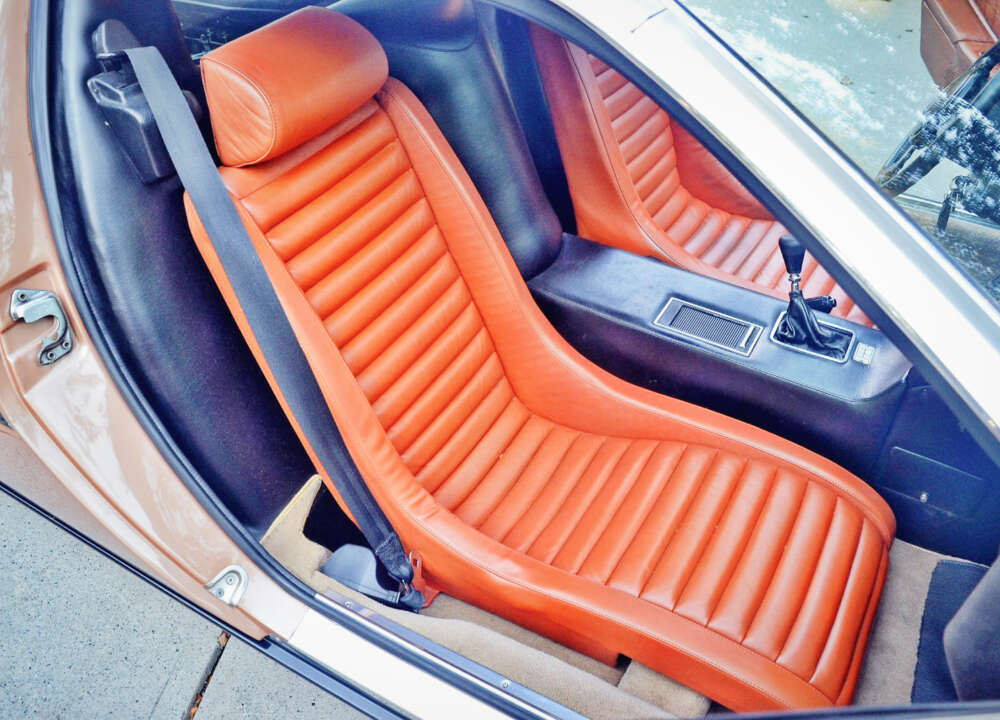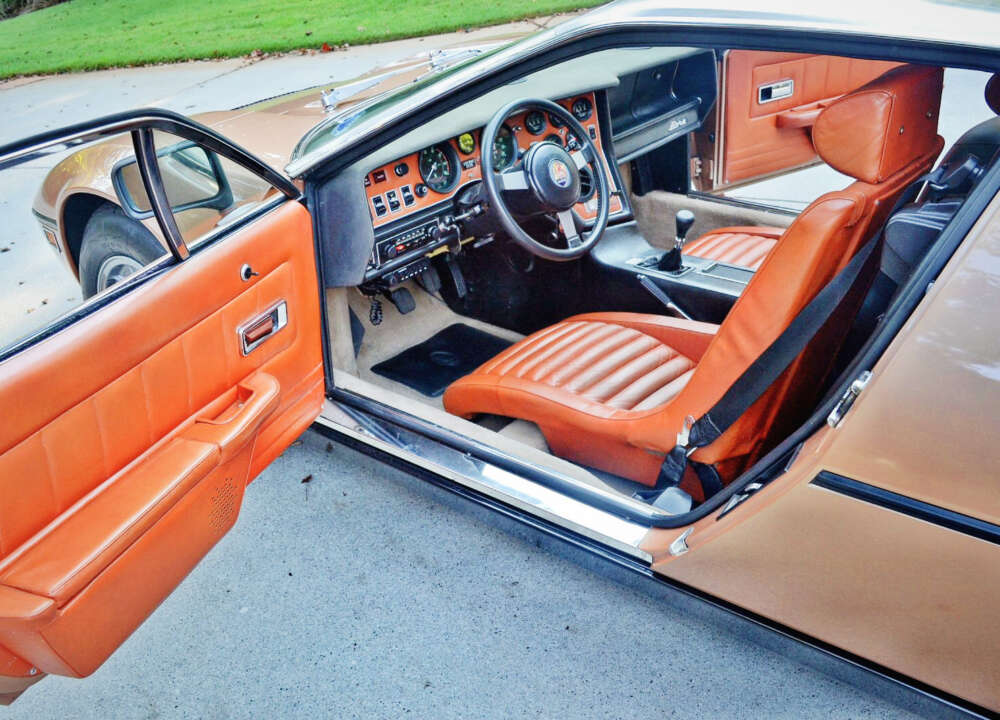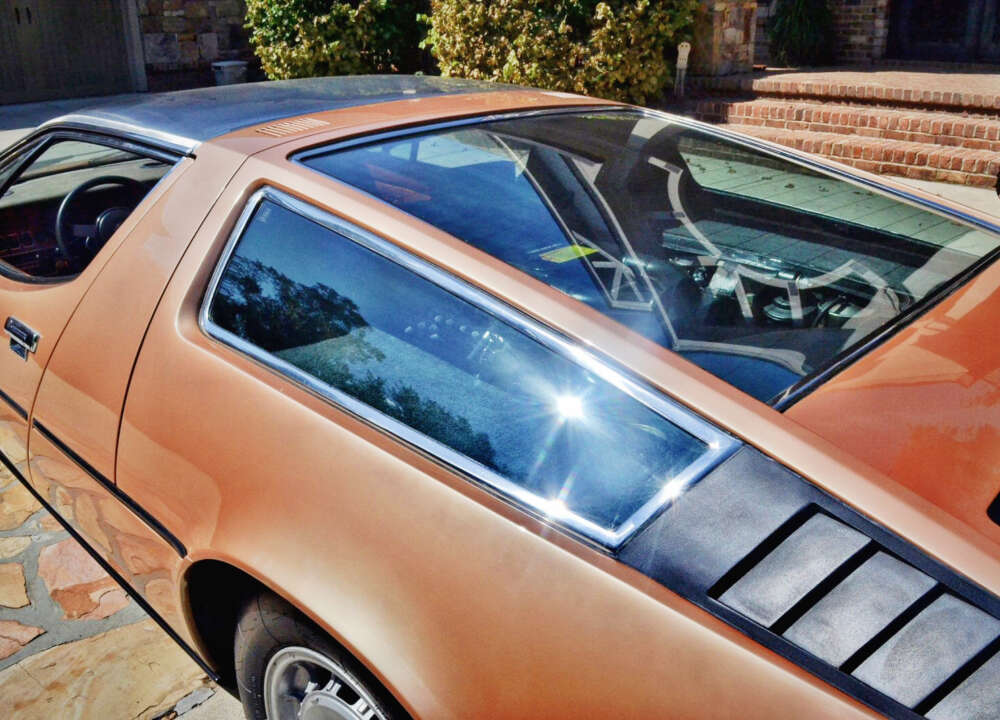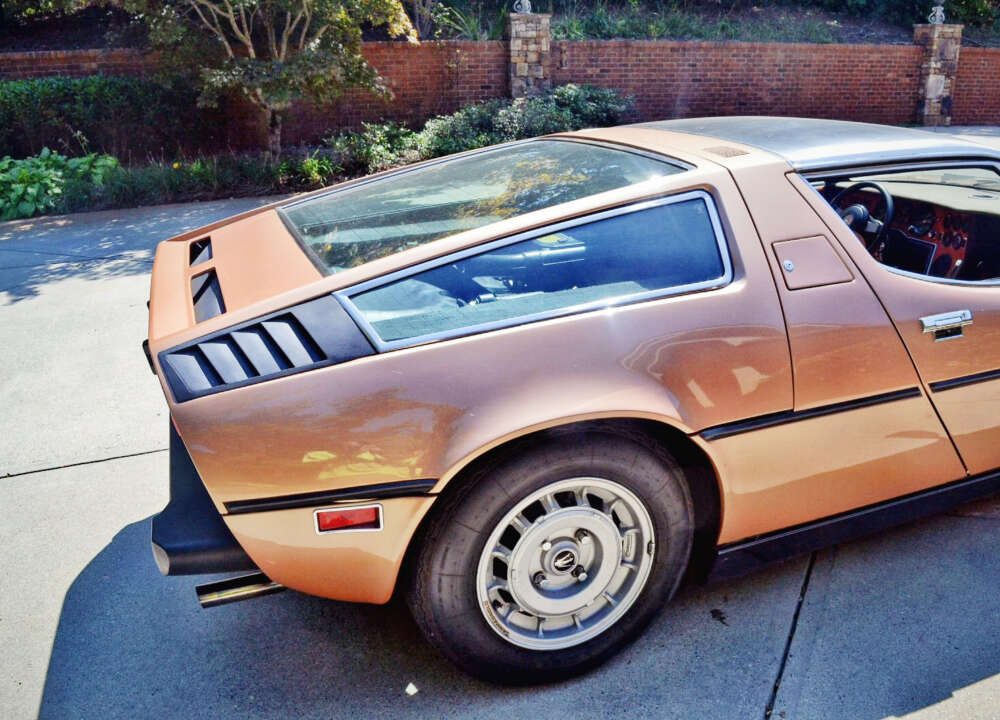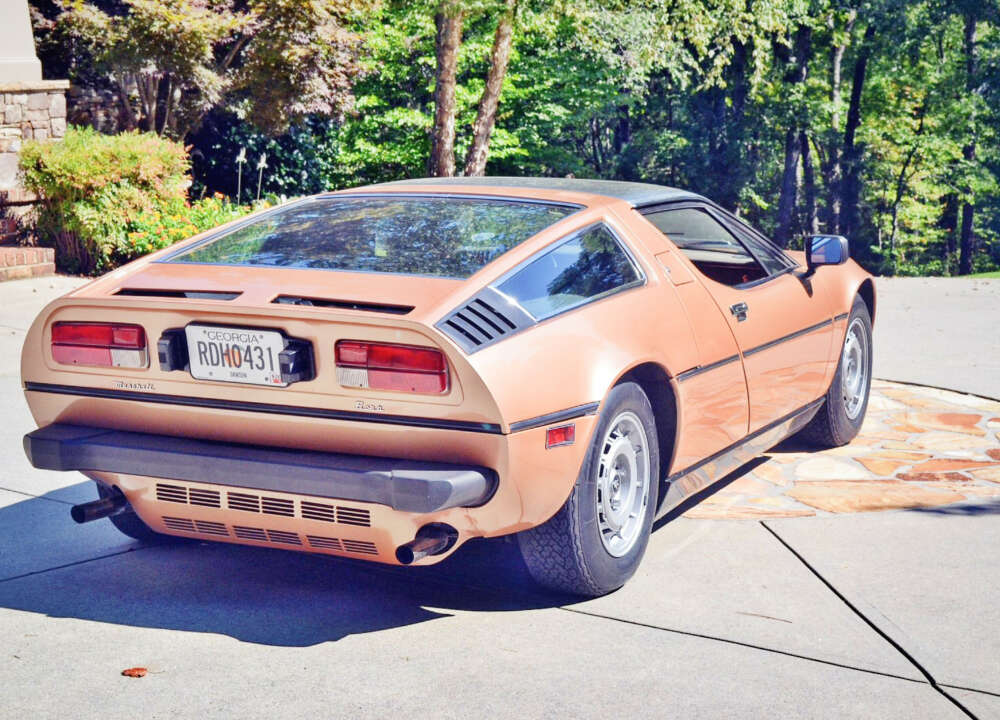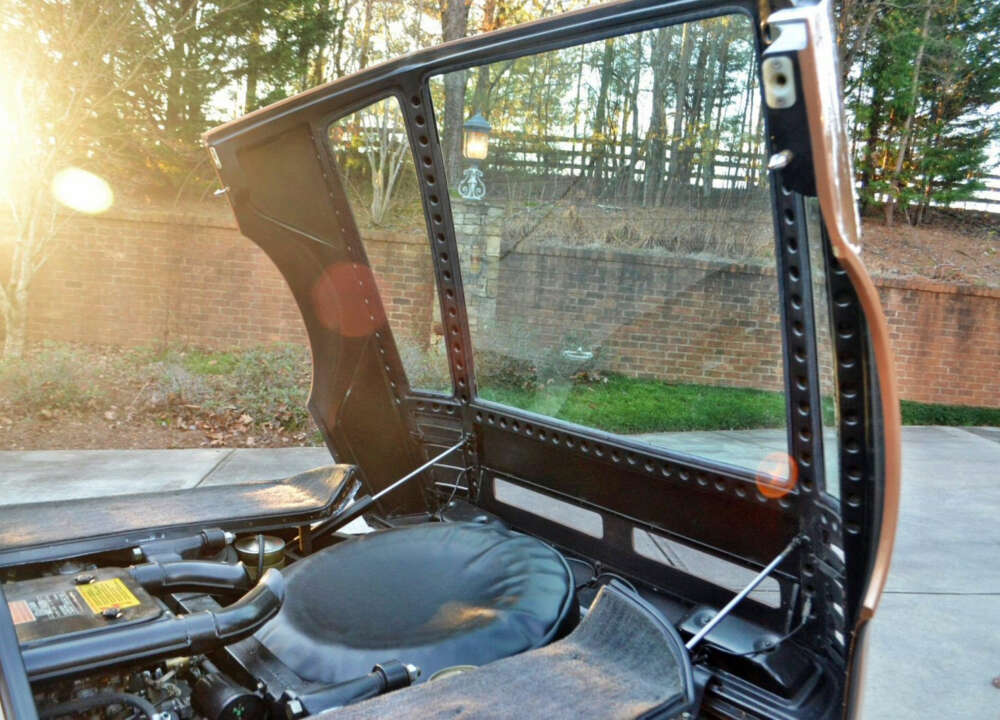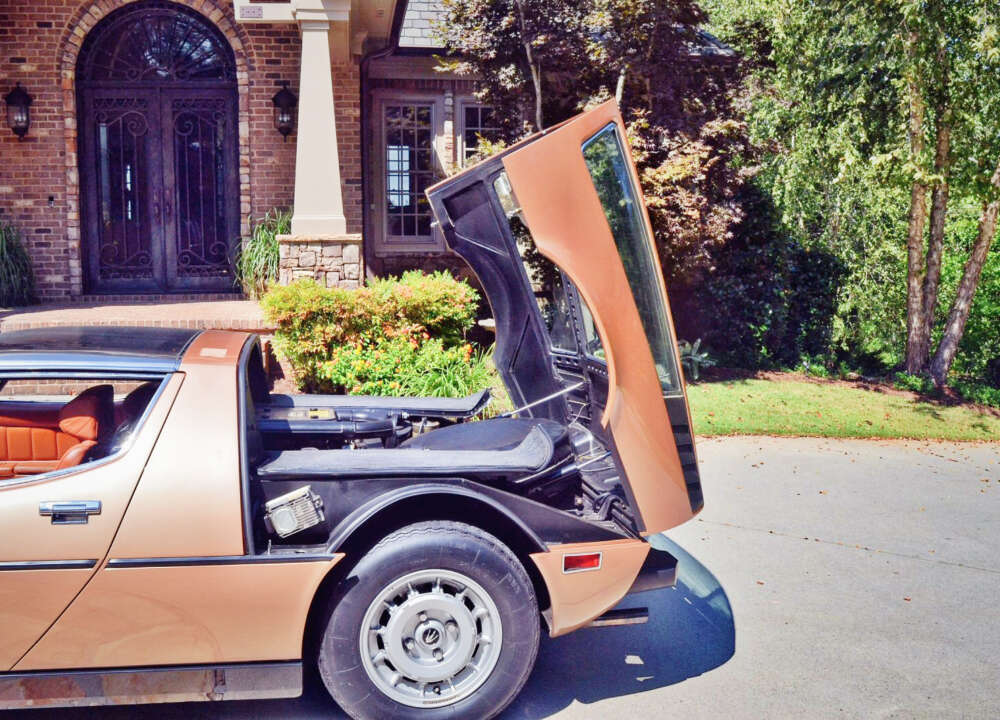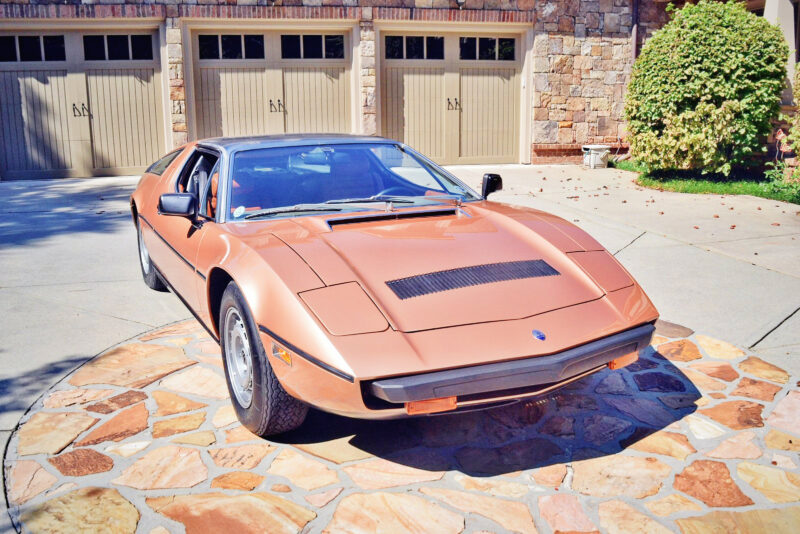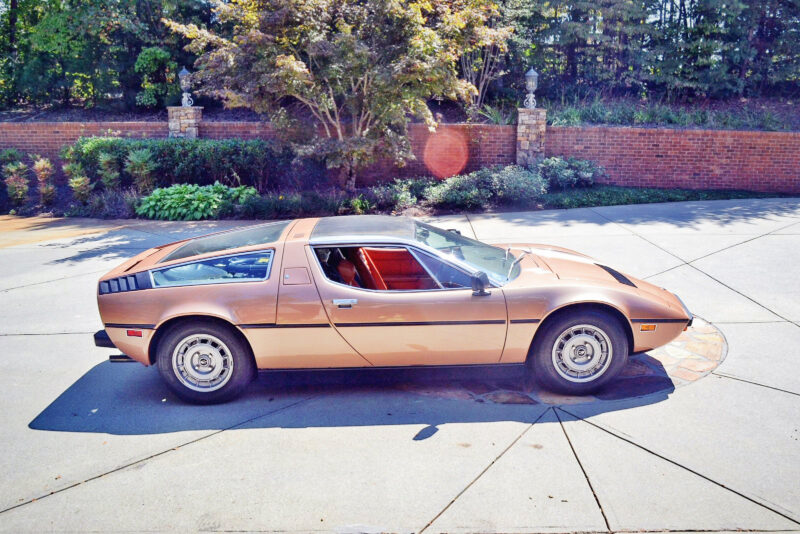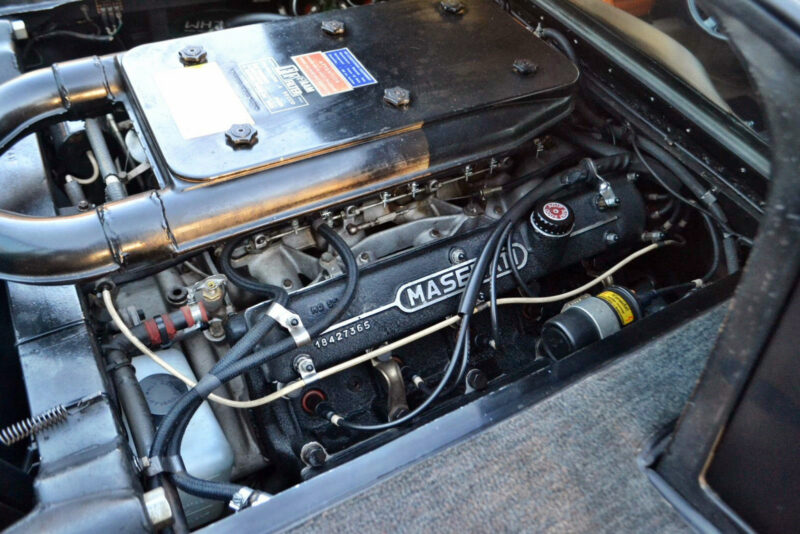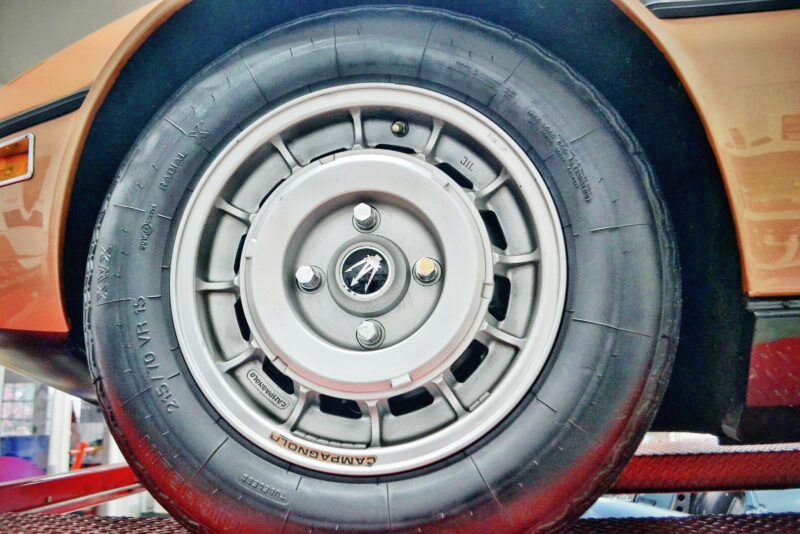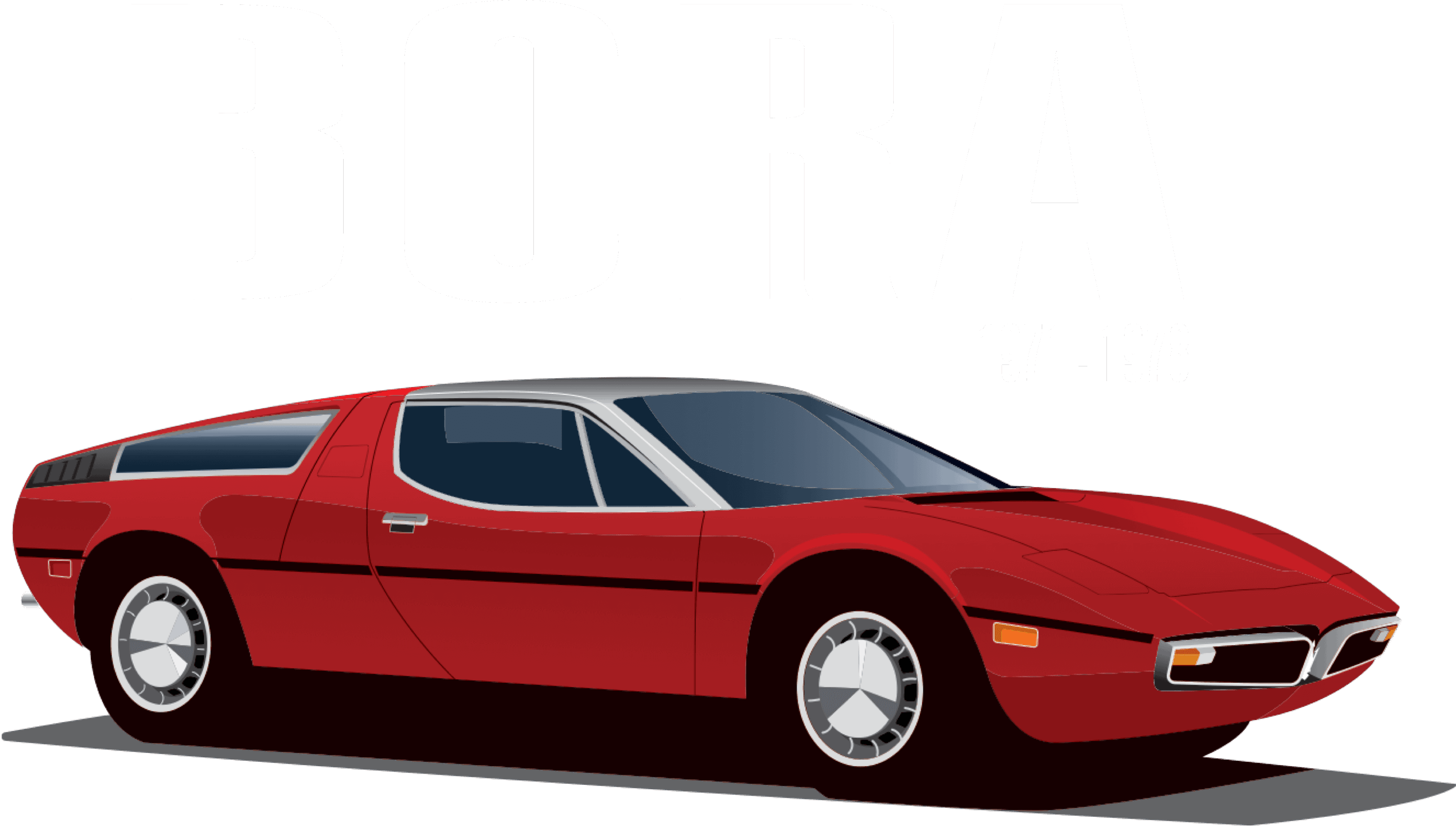
The most refined and accomplished first generation rear mid-engine GT
The Bora was nothing less than the boldest leap into the future in Maserati’s history.
The model range had become aged as funds began to dwindle, and US emissions generated more and more expenses. When the Orsi family sold to Citroën in 1968 its President Pierre Bercot and his Modena representative, administrator Guy Malleret had a thorough plan for the brand. Firstly there was the rebuilding of the factory inside the historical perimeter. However, the spear of the project, the central spike in the Trident was to boldly prove Maserati could build a very advanced, sophisticated rear mid-engined car.
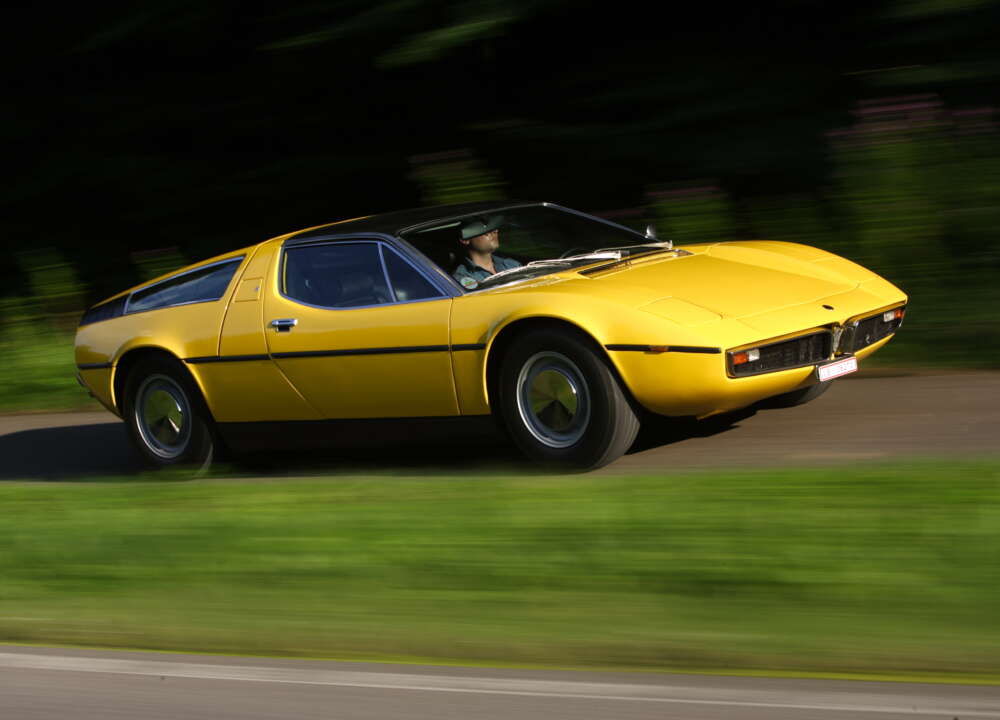
It had to be a well rounded fast and comfortable Gentleman’s Grand Touring car as opposed to a raw thrill source fit only for playboys during short use.
Giorgetto Giugiaro of Ital Design created the bulbous and subdued body to be tastefully handsome. A low nose with pop up headlights, a stainless steel unpainted roof –to make it look less massive- and a glass-covered engine section sat atop a monocoque chassis with the 4,7-litre version of the Maserati V8 sited longitudinally with the ZF transmission at the rear. A subframe around both of these allowed to remove the whole rear end from underneath. It was the first Maserati road car with independent rear suspension. The interior was far more civilized than any other rear mid-engine car up to then, with long leather seats reaching down to the knees. A driver could move the pedal assembly back- and forward hydraulically to select his perfect position. Good air conditioning, a radio unusually located by the left door, potent fade-free hydraulic Citroën brakes and a storage cubicle behind the driver’s seat completed the cockpit. Noise isolation, including double glazed separation behind the occupants, worked efficiently. Unusually with rear mid-engined cars, the trunk in the front was quite spacious and deep. Chief test driver Guerrino Bertocchi was opposed to the idea of a rear mid-engine car for the road, which meant that Cleto Grandi handled development testing. He received help from Belgian journalist and Le Mans 1960 winner Paul Frère.
Its world premiere took place at the 1971 Geneva show where it was well-received. Media test drives reported much more predictable handling and greater driving comfort than other similarly configured rivals. Its performance level was second to none with a 280kph top speed.
US versions were given a 4,9-litre engine version and early on different yet still discreet bumpers before awful huge ones replaced them.
Late in the production cycle, a Euro 4,9-litre version was introduced - without any of the US market specs - but production numbers were low. One car, AM117-366, went to the Aga Khan in Paris. It was the only 4.9 litre sold in France, and it came with a lengthy list of special order requests. It is still in France, dismantled for many years.
NASA Astronaut Walter Schirra picked up his new Bora at the factory where administrator Guy Malleret in person hosted him. Paris based Saudi/Syrian billionaire businessman Akram Ojjeh had a green Bora AM117-430 and considered buying Maserati when Peugeot shut it down in 1975.
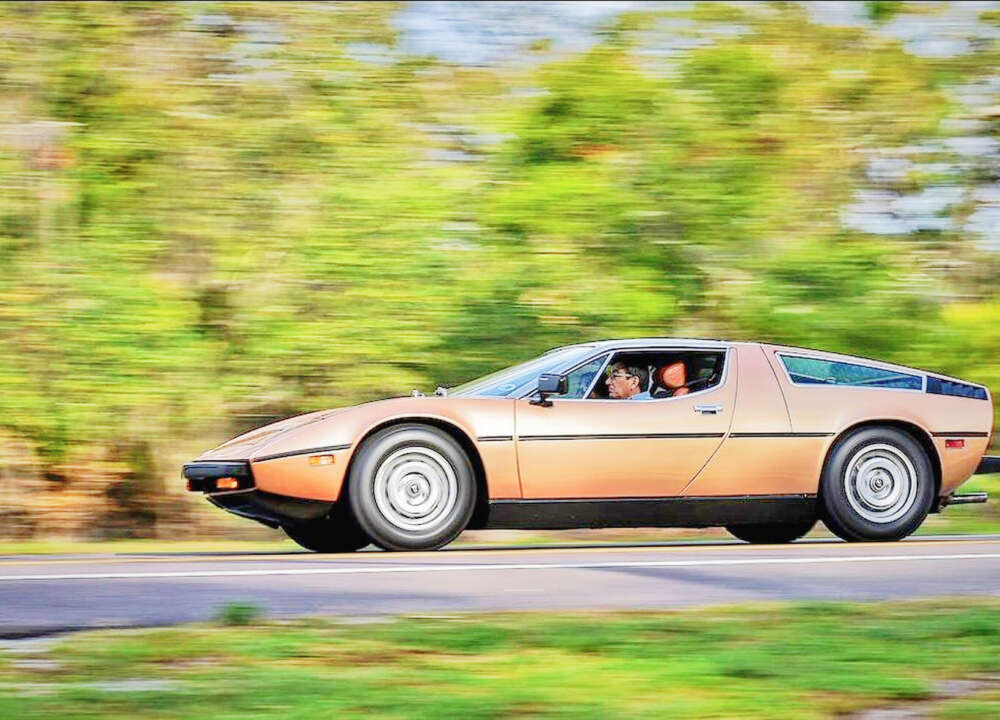
Specifications
The monocoque bodies were made in Modena by Officine Padane, then trucked to Ital Design in Turin which would trim them before Maserati fitted the mechanicals
In total, 564 cars were built. 314 with 4,7-litre engines and 250 with 4,9-litre blocks. Many US Boras were reimported privately to Europe as used cars. Some have received Euro bumper conversions, but there is no conversion kit like for US Khamsins. So it is a more elaborate process, but the expertise is out there.
Perhaps the most famous show car in Maserati history, the Boomerang, was based on a Bora chassis and introduced as a non-running car at the 1971 Turin show in red livery. Then in 1972 at Geneva, it was reintroduced as a running car, repainted grey. Maserati borrowed it from Ital design to evaluate it. Technician Cleto Grandi once caused traffic chaos in Modena when he stopped for coffee on the Via Emilia with this virtual flying saucer everyone wanted to see! The wedge nose would have never passed homologation tests though. It was sold off and spent its first years in Spain, then Germany, the south of France and was sold at the 2015 Bonhams auction in Chantilly, France.
Engine
V8, rear-engine, light-alloy block,
4719 cc, 4930 cc for Bora 4900
Power output: 310 hp; 320 hp
Body
Two-door, two-seater Coupé, in steel
Designed by Italdesign
Performance
280 kph
Competitors
Lamborghini Miura or Countach, Ferrari 365BB, de Tomaso Pantera, The Porsche Turbo, all its rivals were less comfortable less homogenous, handled worse. In a group test drive article five-time Le Mans winner Derek Bell was astounded by the Bora’s efficient and non-treacherous handling. Competitors have brakes that fade, heavy steering and pedals. As a result, they are tiresome to drive during long distances. The Bora is supreme on long journeys, as fast as any of those competitors.
Valuation
The Bora has always been undervalued and significantly less expensive than all of the competitors. Except for Panteras. Since Boras are sophisticated cars buy the best you can. Walk away from any neglected one which will end up costing you twice as much. Like with a Khamsin, it is only complicated if you give it to the wrong mechanic or workshop. A good example in 2020 is worth 200.000 Euro.
We are aware that the valuation of this car is very subjective and depends on many criteria. That is why auctions are used as a barometer to sense where the market is moving. However, premium restored or preserved classic Maseratis change ownership through private sales (and seldom in an auction). As a result, rarely do we discover the price for an off-market transaction.
Persuasion
The Bora is far more comparable to a late version Porsche 928 in terms of ease of use. But if you want to attack your favourite backroad, it morphs into a Le Mans sports-prototype. Most of its rear mid-engine rivals are tiresome after two hours on the road. A Bora will give you a pleasant 1000km journey whatever your speed inclinations. The hydraulics are entirely reliable in a well-maintained car and do not require elaborate attention, just competence. Like with any classics, regular use keeps a car happy.
Initial texts by Marc Sonnery.
Registry
This registry is in the hands of the Classiche Masters team and was first started in June 2020. So If you happen to have information about these cars please mail info@classichemasters.com or go to
https://join.classichemasters.com/c/Bora-Registry/ . A one-time registration is required.

